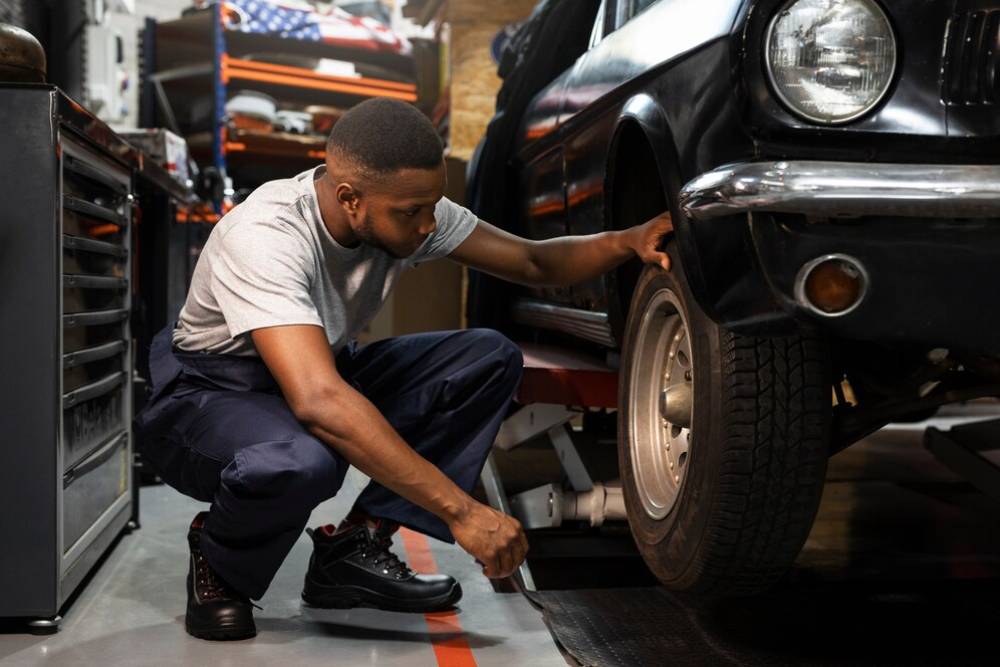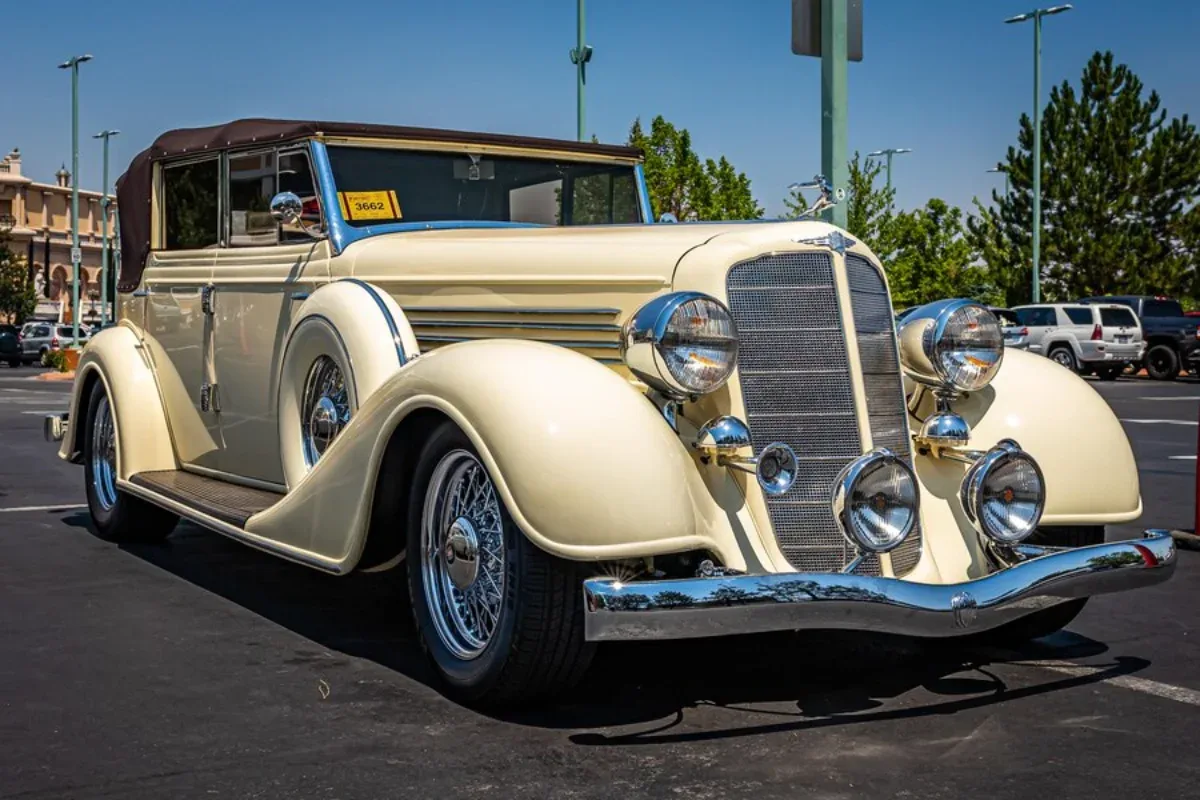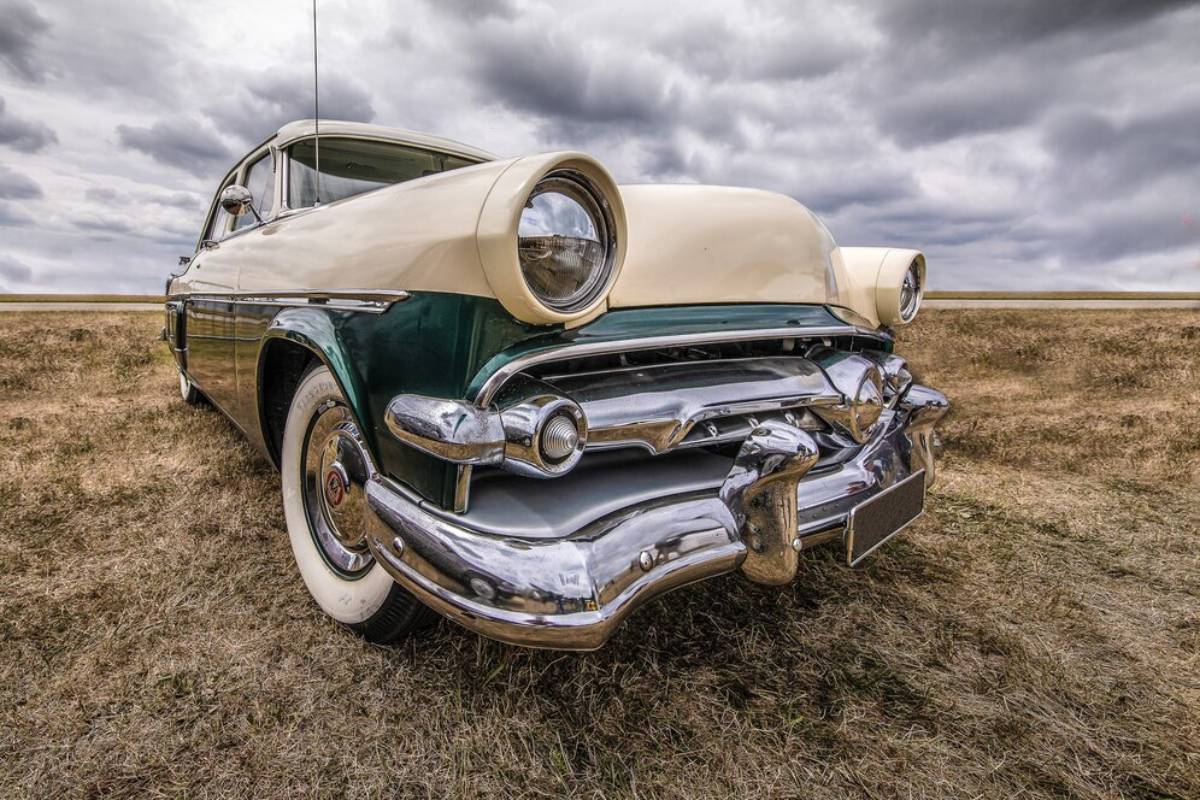
How to Maintain a Classic Car for Longevity
If you own a classic car, you can almost say you own a part of history. These vintage vehicles reign supreme in machines, each representing a bygone era of craftsmanship and design. Maintenance is a sacred ritual in keeping a classic running. Whether you are an experienced collector or a new one, knowing the fundamentals of classic car care will provide years of value, function, and style to your vehicle.
Pro Tip:
Always warm up your classic car before taking it for a drive. Unlike modern vehicles, classic engines need time for oil circulation and optimal lubrication, preventing premature wear and tear.
Quick Guide:
- Inspect Regularly – Check fluids, belts, and hoses to catch early signs of wear.
- Clean and Protect – Wash, wax, and apply rust-proofing to prevent corrosion.
- Mind the Interior – Use appropriate cleaners for vintage upholstery and dashboards.
- Maintain the Engine – Change oil, monitor coolant, and use fuel stabilisers for longevity.
- Store Properly – Keep in a dry, climate-controlled space and drive periodically to keep parts functional.
Important Tip:
Avoid letting your classic car sit idle for too long. Short drives help prevent mechanical issues, keep seals from drying out, and ensure the battery stays charged.
Why Maintaining a Classic Car Matters

Preserving History and Heritage
Classic cars connect us to automotive history, showcasing technology and craftsmanship. Proper maintenance keeps these historic vehicles in great shape for future generations.
Enhancing Value and Investment
A well-maintained classic car lasts longer and holds or increases its value. Collectors and buyers seek vehicles in excellent condition, making regular upkeep a wise investment.
Enjoyment and Pride of Ownership
A classic car should be driven and enjoyed. Keeping it in top condition lets you experience the joy of driving while avoiding unexpected breakdowns and costly repairs.
Step-by-Step Guide to Maintaining Your Classic Car

1. Routine Inspections and Servicing
Regular Checks
- Check fluid levels, including engine oil, coolant, transmission, and brake fluid.
- Ensure all lights, wipers, and electrical parts work correctly.
- Look for wear or cracks in belts and hoses.
Professional Servicing
- Some tasks can be done at home, but professional help ensures thorough inspections and repairs.
- Find a mechanic experienced with tools for classic cars, as they have unique needs.
2. Protecting the Exterior
Regular Cleaning and Waxing
- Wash your car often with a pH-balanced shampoo to avoid dirt buildup and oxidation.
- Apply quality wax to shield the paint from fading and damage.
- Use a microfiber cloth to prevent scratches.
Rust Prevention
- Check the undercarriage, wheel wells, and doors for early rust signs.
- Use rust-proofing treatments on vulnerable areas.
- Store the car in a dry, climate-controlled space to avoid moisture.
3. Maintaining the Interior
Upholstery Care
- Clean leather, vinyl, or fabric seats regularly with the right products.
- Use UV-protective sprays on leather to stop drying and cracking.
Dashboard and Controls
- Dust and wipe the dashboard and controls with a soft cloth.
- Avoid excessive water or harsh cleaners that can damage vintage materials.
4. Engine and Mechanical Maintenance
Regular Oil Changes
- Use high-quality oil designed for vintage engines.
- Change the oil as recommended or every 3,000 miles.
Cooling System Care
- Regularly check radiator and coolant levels.
- Flush the cooling system to prevent overheating, a typical classic car issue.
5. Storing Your Classic Car
Climate-Controlled Environment
- Store your car indoors to protect it from extreme temperatures and humidity.
- If outside, use a high-quality, breathable cover to prevent moisture buildup.
Regular Exercise
- Even if not driven often, take your classic car for short drives.
- Driving lubricates the engine, prevents tyres from flat spots, and keeps parts working well.
Pro Tips for Classic Car Maintenance
- Use Original or OEM Parts: Choose original parts or high-quality reproductions for replacements to keep authenticity.
- Keep Detailed Records: Document all maintenance and repairs to increase resale value and track the car’s history.
- Avoid Modern Cleaning Products: Many modern cleaners contain chemicals that can harm vintage materials. Use products made for classic cars.
- Check for Fuel Stability: Classic cars often sit unused. Use a fuel stabiliser to prevent varnish and fuel breakdown.
- Test the Battery: If storing it long-term, disconnect it or use a trickle charger to keep it healthy.
- Inspect Suspension and Steering: Regularly check for wear for bushings, ball joints, and suspension parts.
- Be Mindful of Tire Care: Keep tires inflated and rotate them often to avoid flat spots and uneven wear.
Common Mistakes and Misconceptions
Neglecting Regular Maintenance
Due to limited use, some classic car owners think their vehicles need less servicing. In truth, regular maintenance is vital to prevent deterioration and costly repairs.
Using Modern Products on Vintage Cars
Modern lubricants, fuels, and cleaning agents may not suit classic cars. Using the wrong products can damage seals, gaskets, and paint.
Overlooking the Importance of Driving the Car
Letting a classic car sit too long can cause issues like fuel system blockages and battery drainage.
Advanced Insights and Expert Recommendations
Understanding the Unique Needs of Classic Cars
- Some classic cars need leaded fuel or additives to run well.
- Older engines may have different oil viscosity needs than modern ones.
Networking with Other Enthusiasts
- Join classic car clubs and online forums to connect with other owners for insights and tips.
- Attend car shows and events to learn from experts and find rare parts.
Modifications vs. Preservation
- Some owners modify cars for better performance, like upgrading the ignition system.
- If originality matters, ensure modifications are reversible or keep original parts for restoration.
Conclusion

Owning a classic car is a commitment, but it pays off significantly. Your classic car can remain a beloved part of automotive history with the proper care for many years of enjoyment. These maintenance tips apply whether you’re an experienced collector or new to the games, ensuring your vehicle stays in excellent condition so you can enjoy the pride of classic car ownership for generations to come.
FAQs
How often should I drive my classic car?
Drive your classic car at least every two weeks to keep mechanical parts in good shape. Regular driving prevents engine stagnation and keeps seals lubricated.
What type of fuel should I use in my classic car?
Many classic cars were made with leaded fuel. Use a suitable lead substitute or consult an expert for alternatives if unavailable.
Can I use synthetic oil in my classic car?
Some synthetic oils might be too thin for vintage engines. Always check your vehicle’s manual or ask a specialist before switching.
How do I prevent rust in my classic car?
To avoid corrosion, inspect the vehicle regularly for rust signs, apply rust-proofing treatments, and store it in a dry, climate-controlled space.
Is it safe to use a modern battery in a classic car?
Yes, but ensure it meets your vehicle’s voltage and amperage needs. A battery tender or trickle charger helps maintain battery life during storage.
Should I modify my classic car for better performance?
Modifications like electronic ignition and upgraded brakes can enhance performance. However, if you want to keep it original, consider reversible changes.
What’s the best way to store my classic car long-term?
Store your car in a climate-controlled garage, use a breathable cover, disconnect the battery, and elevate it on jack stands to prevent tyreflat spots.


